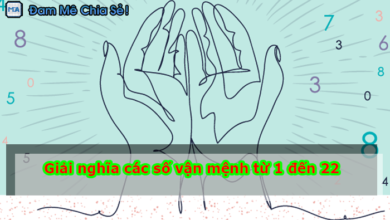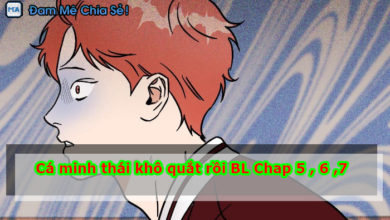Nikki Catsouras Photos Real : A Deep Dive into the Infamous Internet Controversy
In the vast, relentless digital universe, the boundaries between public spectacle and private grief often blur, as highlighted by the infamous “Nikki Catsouras Photos Real” incident. The tragic death of 18-year-old Nikki Catsouras, known posthumously as “Porsche Girl”, thrust her family into the epicenter of an ethical maelstrom when photos of her gruesome accident went viral. This article delves into the details surrounding Nikki’s death and its ensuing controversy, the “Porsche Girl Photos Head” viral meme, and the subsequent dialogue about digital responsibility that it sparked. Following hocdientu.vn !

I. Nikki Catsouras Death: The Tragic Incident
The Fateful Day: Detailing Nikki Catsouras Death
Nikki Catsouras, an eighteen-year-old Californian teen and daughter of novelist Lesli Catsouras and real estate broker Christos Catsouras, faced a tragic and untimely death on October 31, 2006. On this fateful day, Nikki made a spontaneous decision that would lead to an irreversible catastrophe. She decided to take a joyride in her father’s luxury car, a Porsche 911 Carrera.
Regrettably, Nikki lost control of the high-speed vehicle and slammed into a toll booth in Lake Forest, California. The crash was so violent that Nikki was killed instantly, her young life cut brutally short. The severity of the accident was such that the coroner felt it necessary to forbid the family from identifying their daughter’s body, an indication of the gruesome reality of the crash.
The Photos: Exploring “Nikki Catsouras Photos Real”
As part of their standard operating procedure, members of the California Highway Patrol took photographs of the accident scene for forensic examination. These photos were intended to serve as a crucial part of the crash investigation, documenting the extreme nature of the accident. However, they soon served a different, more disturbing purpose.
In a highly unethical act, two patrol officers allegedly leaked these photos, sending them to friends as a harsh reminder of the dangers of reckless driving. As with all things in the digital age, the pictures quickly found their way onto the internet, starting a chain reaction that would be impossible to stop.
The images, which graphically depicted Nikki’s mangled remains among the wreckage, began to spread at an alarming rate. They were shared across various websites, including gore blogs, body horror message boards, and even pornographic sites. As these “Nikki Catsouras Photos Real” started circulating, Nikki’s tragic accident was transformed into a horrifying spectacle for thousands of internet users.
Regrettably, the images didn’t just remain in the dark corners of the internet. They were sent to the Catsouras family by malicious internet trolls, often accompanied by sickening captions. This act amplified the family’s grief, pushing them further into a nightmare they were desperately trying to wake up from. This led to Nikki’s posthumous and unwanted title as the “Porsche Girl,” with her real death photos becoming a morbid meme.
II. The Aftermath: The Spread and Impact of “Porsche Girl Photos Head”
From Personal Tragedy to Public Spectacle: The Viral Spread
The dissemination of Nikki Catsouras’s death photos marked a dark turn in the evolution of internet culture, illustrating the depths to which online communities could sink. The leaked photos, in their explicit and gory detail, were shared, re-shared, and then morphed into memes, earning the nickname “Porsche Girl Photos Head”.
These images soon spread like wildfire across various online platforms. Gaining notoriety as the “Porsche Girl” meme, Nikki’s fatal accident was transformed from a personal tragedy into a public spectacle. In this digital era, with the ease of sharing content online, the photos were virally disseminated, revealing the insensitivity that can sometimes characterize internet culture.
The Impact: The Trauma Faced by the Catsouras Family
For the Catsouras family, the images represented a profound violation of their privacy and a horrific amplification of their grief. The family had to face the cruel reality of Nikki’s death not only privately but also very publicly. What was supposed to be a private mourning turned into a traumatic public ordeal as they were sent images of their daughter’s disfigured body by anonymous internet trolls.
These images served as a haunting reminder of the brutal death of their daughter, and the captions that accompanied these photos added salt to the family’s deep wounds. The immense distress caused by this gross invasion of their privacy led the family to file a lawsuit, attempting to seek some form of justice and control over the situation.
This unending trauma forced the Catsouras family to retreat from the internet, fearing they might encounter the images at any given moment. As of 2023, the photos of Nikki Catsouras are still accessible online, a grim reminder of how online images can be detached from their offline context, frequently resulting in negative effects on actual people. This case is an unsettling demonstration of the ethical challenges posed by the internet, particularly regarding the dissemination of sensitive material.
III. The Ethical Debate Surrounding “Nikki Catsouras Photos Real”
Legal Battle: The Catsouras Family’s Response
Faced with the grotesque viral spread of their daughter’s accident photos, the Catsouras family took legal action against the California Highway Patrol. They claimed that the two patrol officers who allegedly disseminated the photos breached their daughter’s privacy and caused the family extreme emotional distress. The lawsuit ignited a long, complex battle about privacy rights, the bounds of free speech, and the responsibility of law enforcement officials.
Although initially dismissed, the case was eventually heard by the California Fourth District Court of Appeal. In a landmark ruling, the court found that law enforcement officers could indeed be held liable for distributing accident scene photos for non-law enforcement purposes. This ruling was a significant victory for the Catsouras family and brought into focus the ethical and legal issues surrounding the sharing of such graphic images online.
Viewer or Voyeur? Understanding Ethical Responsibility
The “Nikki Catsouras Photos Real” controversy brings up broader ethical questions about our behavior as consumers of digital content. While the internet has brought about countless positive changes, it has also raised new ethical challenges that society is still grappling with.
On one hand, the incident brings into sharp focus the voyeuristic nature of our digital culture, where tragedies can quickly be turned into entertainment. Those who shared or consumed the disturbing images played a part in this unfortunate transformation of a young girl’s tragic death into a viral spectacle.
On the other hand, it underscores the critical role of platform policies and legal frameworks in shaping online behavior. As digital citizens, we need to hold ourselves accountable for the content we engage with and share. Moreover, digital platforms also need to enforce stricter rules about graphic content sharing, taking into consideration the ethical implications and potential harm it might cause.
The “Nikki Catsouras Photos Real” incident is a tragic example of how insensitivity on the internet can amplify the pain of those who are grieving. It is a stern reminder of our ethical responsibility when it comes to sharing and engaging with sensitive content online.
IV. “Nikki Catsouras Photos Real”: Lessons from the Internet Age
Detached Virality vs Human Stories: The Harsh Reality of the Internet
The story of Nikki Catsouras and the “Porsche Girl Photos Head” meme forces us to confront a harsh reality of the digital age: the potential for the internet to detach viral content from its original human context. The photos of Nikki Catsouras’ tragic death became more than just images; they transformed into an impersonal digital phenomenon that neglected the devastating human story behind them.
This phenomenon serves as a stark reminder of the ethical implications of online behavior. It emphasizes the urgent need for a more compassionate approach to content sharing online, one that respects the dignity and humanity of individuals involved. As digital citizens, it is crucial to recognize and reflect upon the power that comes with having the world’s information at our fingertips, and how we can navigate this landscape responsibly.
“Porsche Girl Photos Head”: Continuing the Cycle of Trauma
The continuation of the “Porsche Girl Photos Head” meme and the ongoing circulation of Nikki Catsouras’ death photos serve to perpetuate a cycle of trauma. For the Catsouras family, each new share, each new view, each new meme means the wounds of their loss are reopened.
Moreover, it potentially inflicts psychological harm on viewers, particularly younger internet users, who might stumble upon these graphic images unintentionally. The viral nature of the images and the ease with which they can be accessed underscore the need for robust digital literacy and more effective content moderation policies to protect vulnerable individuals from traumatic content.
In conclusion, the “Nikki Catsouras Photos Real” story is a somber cautionary tale for the internet age. It is a testament to the internet’s power to both connect and harm, and the critical need for empathy, responsibility, and regulation in our digital world. The internet has irrevocably changed how we engage with the world and each other, and it is up to us to ensure that this engagement is positive, respectful, and humane.
V. Gleaning Lessons from “Nikki Catsouras Photos Real”
The “Nikki Catsouras Photos Real” controversy exemplifies the internet as a double-edged sword. It is an incredibly potent tool that can connect us, inspire us, and empower us. Simultaneously, it has the potential to be wielded irresponsibly, leading to harm, trauma, and tragedy. When we share sensitive content online, it’s crucial to remember that we’re not just sharing impersonal images or text. We’re sharing real-life moments, sometimes incredibly painful ones, that have deep, lasting impacts on the lives of real people.
Being digital citizens comes with a moral responsibility. We must question what we share, why we’re sharing it, and the potential impact it could have. As the story of Nikki Catsouras reminds us, one of the most critical lessons of the digital age is to treat the power of the internet with the respect and responsibility it commands.
While the public narrative of Nikki Catsouras’ death has been largely dominated by the controversial photo scandal, her story also bears an important, albeit unintended, cautionary message about the dangers of reckless driving.
Nikki Catsouras was just 18 years old when she took a joyride in her father’s Porsche, resulting in a fatal high-speed crash. Her tragic and untimely death serves as a potent reminder of the critical importance of safe driving habits. As we remember Nikki, it’s essential that we also remember and communicate this crucial message, promoting responsible behavior on the roads to prevent such tragedies from recurring in the future.
In conclusion, while the “Nikki Catsouras Photos Real” story is deeply troubling, it is also an opportunity to reflect, learn, and improve our actions, both online and on the roads. As we navigate the digital era, we must remember to balance our freedoms with our responsibilities, to respect each other’s dignity and humanity, and to promote safety and well-being in all aspects of our lives.
The “Nikki Catsouras Photos Real” controversy serves as a grim reminder of the digital age’s potential to transform personal tragedies into shock content or morbid entertainment. It underscores the critical importance of treating sensitive content with respect and recognizing the ethical responsibilities we bear as internet users. Amid the ongoing discussions, it is crucial to remember that each viral post represents a real-life individual, whose story deserves to be treated with dignity and respect.
FAQs:
Q: Who was Nikki Catsouras?
A: Nikki Catsouras was an 18-year-old girl from California who tragically died in a high-speed car crash in 2006.
Q: What is the “Nikki Catsouras Photos Real” controversy?
A: Following Nikki Catsouras’s death, graphic photos of her accident scene were leaked online and went viral, causing severe distress to her family and sparking a widespread debate about online ethics.
Q: What actions did the Catsouras family take in response?
A: The Catsouras family filed a lawsuit against the California Highway Patrol for leaking the photos and fought against the websites hosting these graphic images.
Q: What ethical implications were brought up by the “Nikki Catsouras Photos Real” incident?
A: The incident led to an in-depth debate about the ethical responsibilities of internet users, the governing laws and platform policies for such acts, and the importance of treating sensitive content with respect.
Q: What lessons can be learned from the “Nikki Catsouras Photos Real” case?
A: The case brings to light the importance of understanding the potential harm that can arise from sharing sensitive content online, the need for ethical conduct on the internet, and inadvertently, the crucial importance of safe driving.




